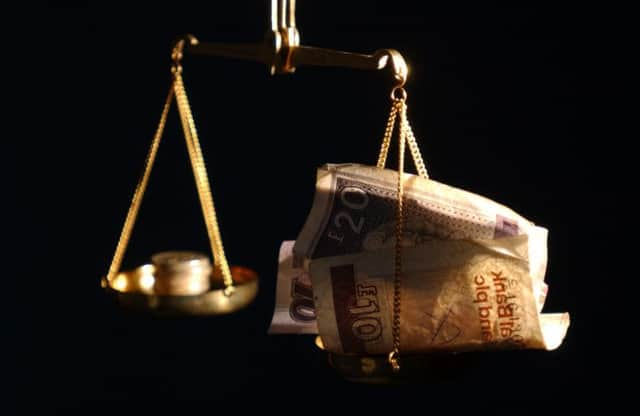Leaders: Scotland’s ‘fair share’ of UK debt


The effect of the statement could well be larger than the modest amount of information that the Treasury has given. It says that should independence occur, there will be no attempt to slice up the stock of debt existing at the point of independence and allocate chunks of it to Scotland and the rest of the UK.
Instead, there will be a negotiation to determine “fair and proportionate shares”, Scotland will become responsible for paying the interest and principals as they fall due for all the debt within that Scottish share, but to the Treasury which will then make the necessary payments to creditors.
Advertisement
Hide AdAdvertisement
Hide AdIn other words, any holder of UK debt at the date of independence, whether it is billions of government bonds or £10 of premium bonds, should notice no difference and there would be no change in the risk of default. The risks involved in any purely Scottish public debt issued after independence day would, of course, be a different matter.
The statement’s purpose is not to cause anything to happen, but to prevent any rise in the cost of UK government borrowing that might be caused if potential buyers of debt felt there were any ripples of uncertainty in the financial world caused by the possibility of Scottish independence.
But the waves on the political pond may be a bit bigger. Alex Salmond was anxious to say that the statement caused him no concern, as it showed the UK government was merely catching up with realities he had already set out. His message was not addressed to financiers, but to voters, saying they should be reassured that he is not just up to the game of independence, but well ahead of the opposition to it.
Given the many factors that are likely to play in the complex negotiations following a Yes vote, it seems unlikely this is a big win for Mr Salmond. His claim that this also reinforces Scotland’s claims to be part of a UK sterling zone look somewhat fanciful.
There is nothing that can be read from the statement about how the Bank of England can be expected to be the lender of last resort to banks in a foreign country, or how two governments could be the bailer-outer of last resort of Scottish banks, or how a fiscal stability agreement could work – three of the chief concerns that make the UK government think a sterling zone is unlikely to be acceptable. That’s not to say all these things cannot be resolved, but simply that this statement goes no way towards doing so.
These and other questions like them have been brought closer to attention by the Treasury statement. The decision Scots have to take has gained a harder edge and the day of decision also seems to loom a lot nearer too.
Art committee draws a pricey picture
An old rule of quangoland says that if you give a committee a budget, it will spend it. So it is with a committee that nobody apart from a select few has heard of – the House of Commons’ Speaker’s Advisory Committee on Works of Art, manned by a selection of MPs from all parties.
This doesn’t just advise on how best to look after or to show off the many works of art in the Palace of Westminster, it commissions new ones. Well, portraits of notables such as outgoing prime ministers or speakers might be fair enough, but does the nation really think Conservative work and pensions secretary Ian Duncan Smith is so remarkable that he must be immortalised in oils?
Advertisement
Hide AdAdvertisement
Hide AdSome of the costings seem odd too. A painting of Labour’s Diane Abbott was done, presumably because she was Britain’s first black female MP, but does she really merit expenditure of £11,750, about the same amount as was spent on a full statue of Lady Thatcher?
And of course, any committee will want to keep sweet with its patron, which must be why the most expensive depiction is that of the current speaker, John Bercow, whose portrait cost a rather stunning £22,000, with a further jaw-dropping £15,000 for a frame and coat-of-arms.
The pace of immortalisation has also picked up, from one every 18 months in the 1990s to two per year in the 2000s. But the price for what, to most members of the public, must look like a vanity project, seems unjustifiable.
A new quangoland rule is needed – every committee must first answer the question: do we really need to spend this taxpayers’ money we have been given or should we give it back?